Words by Mark Hodson
In the busy cosmopolitan port of Bodrum the boats jostling around the harbour are packed in as tight as sardines in a can. There are rusted ferries bound for the Greek islands, grizzled old fishing boats, gleaming white super yachts with blackened windows, and traditional wood-built gulets. Turkey in a nutshell: a mix of ancient and modern, modest and opulent.
Over the past few decades Bodrum has emerged as one of the hot spots of the Eastern Mediterranean, attracting well-heeled visitors from Russia, Brazil and the Arabian Gulf. There’s a Mandarin Oriental resort nearby and on my visit in early May 2023, Roman Abramovich’s mega yacht was in town. Along the palm-lined marina, bars with suited bouncers boomed out dance music, while the faithful were hailed by the cry of the muezzin.
Bodrum is fun for a day, but the real appeal lies beyond, along the beautiful unspoiled coastlines of the Datça and Bozborun peninsulas, which poke into the turquoise waters of the Aegean like long knobbly fingers.
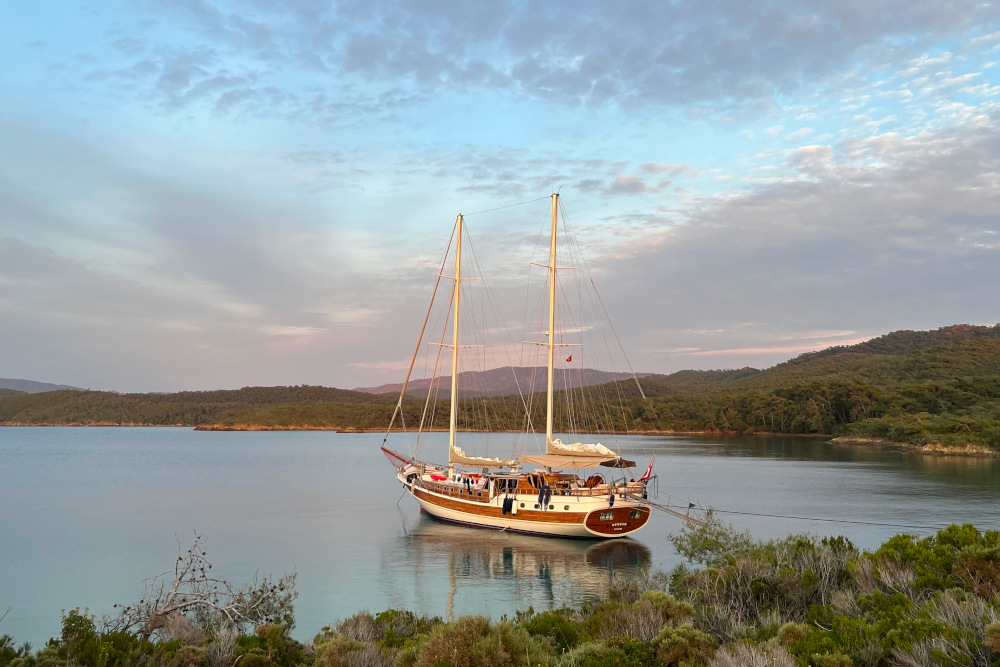
I was joining a week-long cruise to explore the Gulf of Gokova, not on an oligarch’s floating palace, but aboard the Nemesis, a beautiful 25 meter-long wooden sailing yacht with a four-strong crew and space to comfortably accommodate 12 passengers.
The boat is owned and operated by SCIC (pronounced “chic”) Sailing, a small Dutch-Turkish company with an international clientele and a unique policy that promotes the experience of sailing over the certainty of a fixed itinerary.
Its founder Loes Douze explained: “Most cruise companies have set itineraries, so they don’t actually sail any more. They need to turn on the motor to get to the next harbour. Some crews don’t even know how to sail.
“We think it’s more important to open the sails and enjoy the elements, rather than stick to a prescribed route. We have a plan of where we want to go, but we can’t guarantee it.”
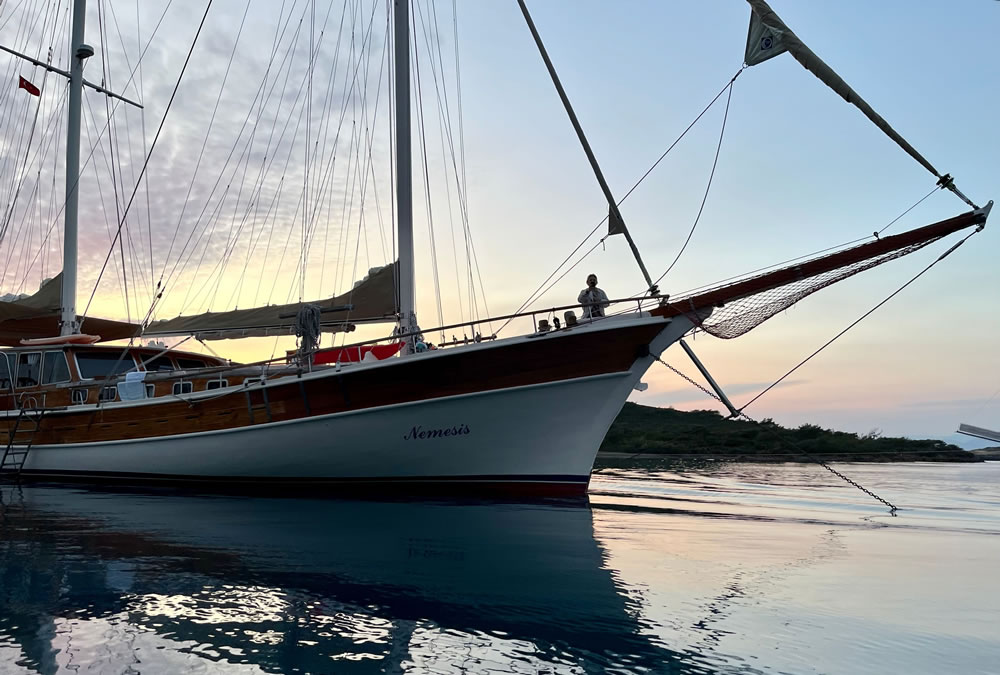
In practice, that does not mean the boat drifts aimlessly. Rather, each morning after breakfast, Captain Recep would unfurl a map and suggest a proposed route to the passengers. If conditions were right, the smartly-uniformed crew would unfurl the sails and we’d lie back in the sun listening to the flap of the canvas and the creaking of the timbers. If there was no wind, he’d resort to the motor.
With a diverse group of passengers from the UK, Denmark, South Africa and Austria, all dining al fresco around the same table, there was a lively house-party atmosphere. Douze is careful to match groups of passengers, putting together well-suited groups. Families with young children are not matched with adult groups, for example.
The Nemesis is pure elegance, all polished wood, coiled ropes and plump cushions. Below deck, the cabins are modest and small, but we were after a different type of luxury – not helipads and caviar, but the luxury of privacy, a pristine natural environment and splendid isolation.
Early on the first morning we left the bustle of Bodrum for the ancient site of Cnidos, an abandoned city that dates back to the 4th Century BC with a well-preserved 5,000-seat amphitheatre set in a steep hillside overlooking a natural harbour. Getting to Cnidos by road involves a long journey from Marmaris. As a result, it only sees 15,000 visitors a year. By contrast, Turkey’s most famous ancient site, Ephesus, gets 3 million.
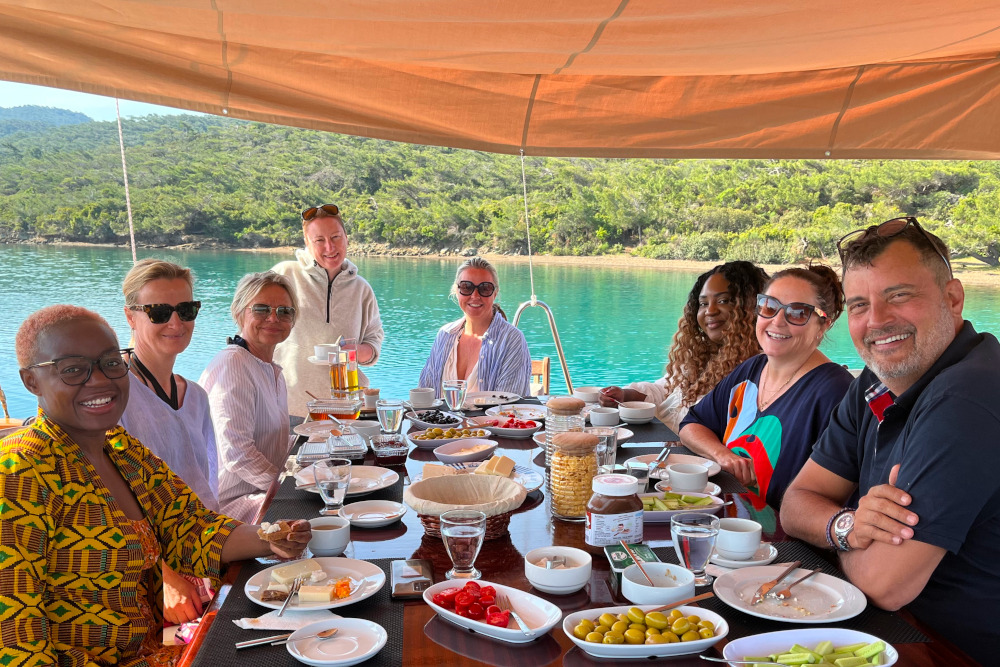
After a private tour of Cnidos, we returned to the boat for a quick swim in the cool crystalline water, then lunch. I have to say here the simple word “lunch” can barely do justice to the ever-changing menu of delicious healthy homemade dishes laid out before us.
At breakfast there would be eggs, warm bread, creamy yoghurt, local honey, plump green olives, sweet tomatoes and three types of cheese. Lunch might be beetroot, pomegranate and yogurt salad, samphire, shepherds salad and roast aubergine with yogurt. All drinks – including wine and spirits – are included.
Each dinner would be prefaced by an array of colourful mezes, followed by a different main course. One evening we had prawns sautéed with mushrooms and peppers, then a whole fried mullet served simply with lemon, rocket and onion. We invited the chef, Sezer (pronounced “Caesar”), to take a bow but he just raised an eyebrow and smiled modestly as if to say: “What’s the big deal? We’ve been cooking like this for hundreds of years.”
Each day we would set sail towards a small port or a deserted cove where we would drop anchor, often the only boat in sight. Sometimes we saw dolphins. As the pink light of dusk fell on the verdant hills, the silence would be broken only by the slap of waves on the hull and the chime of distant goat bells.
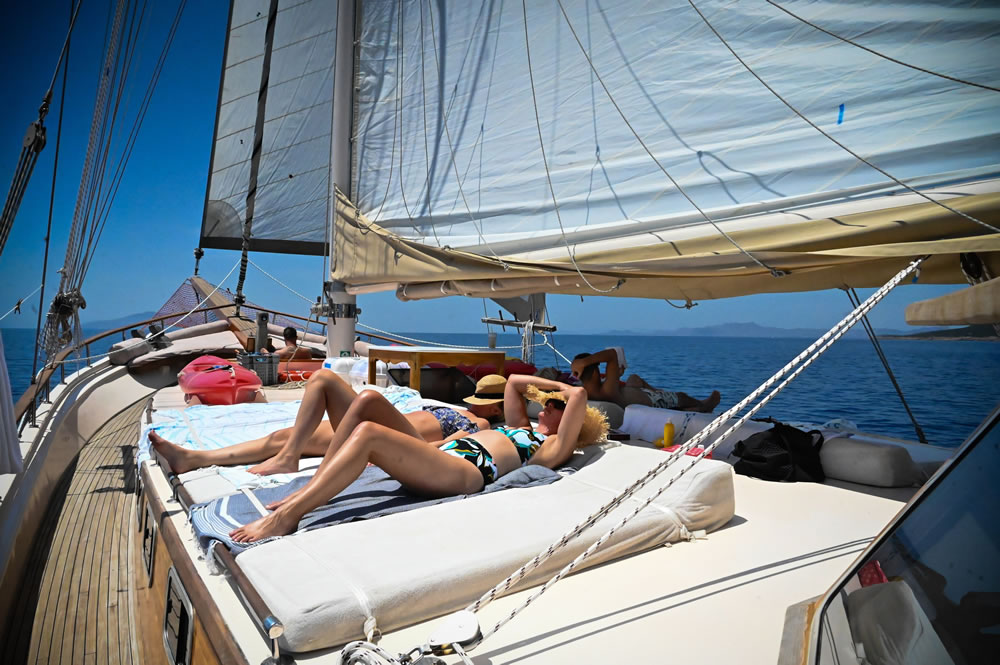
At one spot, Seven Islands Bay, we hiked along the shore and watched a Turneresque sunset, then the crew set up a table on the beach and served us cocktails and snacks. No aircraft flew overhead. Looking around, we could not see evidence of the 20th century, let alone the 21st. Stars glittered in a velvety black sky.
A lot of time on the boat was spent eating, drinking, napping, and chatting with new friends. I was pleased to find that the wifi was intermittent and the 4G signal was patchy. Just enough to exchange messages with loved ones at home, but not enough to waste pointless hours scrolling phones.
There were excursions too. One day we stopped for lunch at Sedir Island, a national park set amidst turquoise and cobalt seas, which is home to the white-sanded Cleopatra Beach (it is claimed the Egyptian queen bathed there). The beach is worth a visit, but the whole island is beautiful with boardwalks winding amidst fields of wild flowers, bees and butterflies, an amphitheatre and a Sanctuary of Apollo that dates back 2,400 years.
Another morning we strolled around the morning market at Oren where village women in head scarves and long skirts sold fresh fruit and vegetables from makeshift stalls – fat strawberries, shiny aubergines and farm-fresh cherries. We drank Turkish coffee and cherry juice on low chairs beneath ancient olive trees. It was a slice of old Turkey, unchanged for centuries.
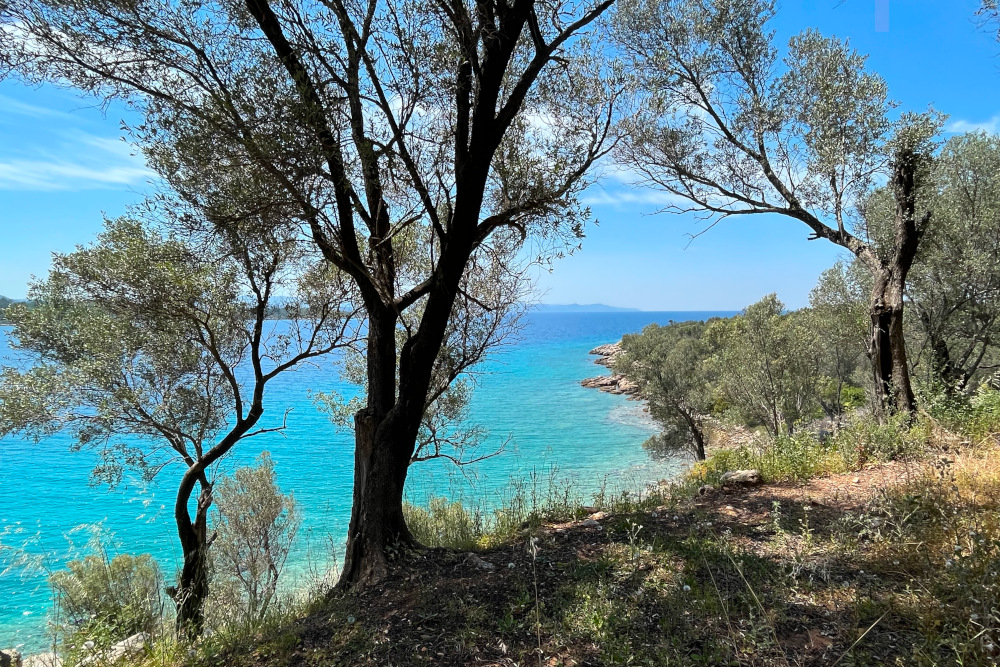
The week went all too quickly. On the last day I got up early to watch the sun rise over another deserted bay. One of the crew appeared with a cup of coffee as the sunlight sparkled off the mirrored surface of the water. My reverie was broken by the ringing of the bell that signalled breakfast.
I’ll admit I’m a sucker for all the opulence and pampering that we so typically associate with luxury, but for me this experience of nature undisturbed, the elegance of a sailing boat, simple delicious food, the company of good people, no tasks on my to-do list, that’s real luxury.
What it costs
A week’s charter of the Nemesis for up to 14 passengers costs between €6,110 and €9,834, depending on the season, excluding meals and drinks. For individual bookings, a week’s cruise costs between €1,107 and €1,390 per person, including meals and drinks and based on two sharing a cabin. For solo travellers, there’s a single supplement of €250.
Contact: SCIC Sailing






















